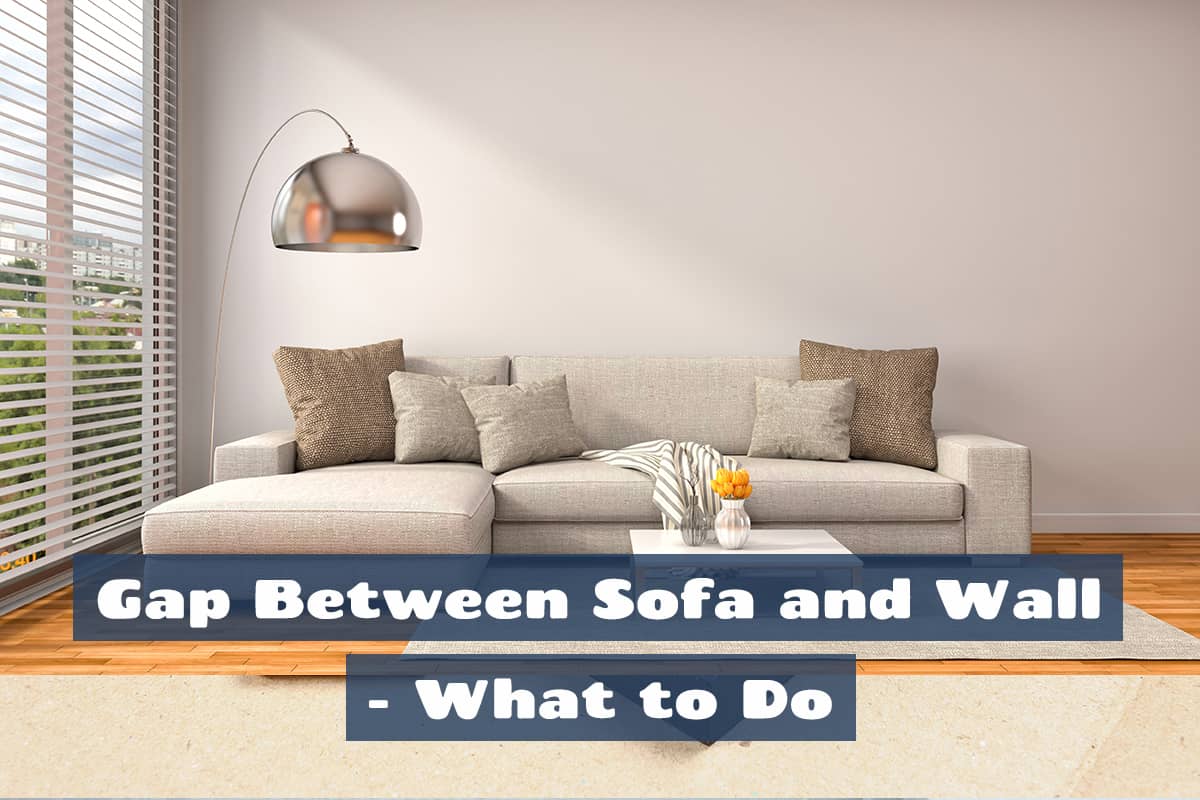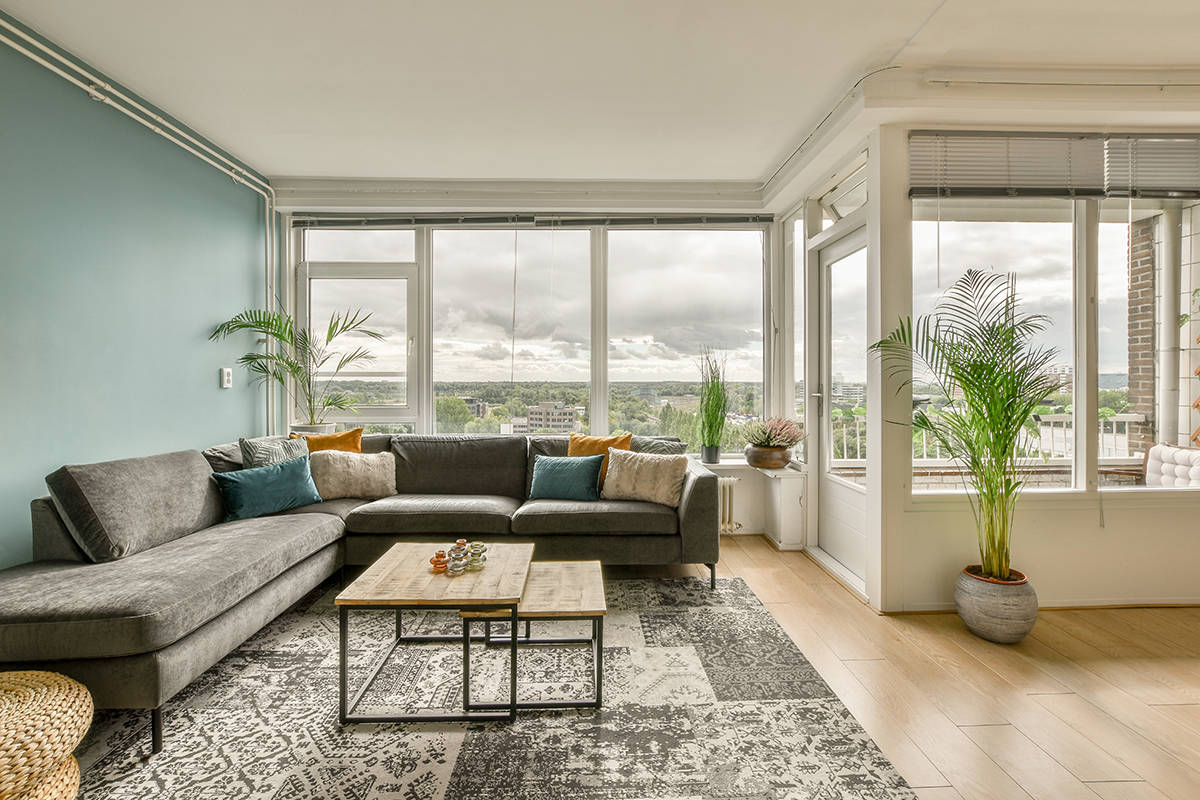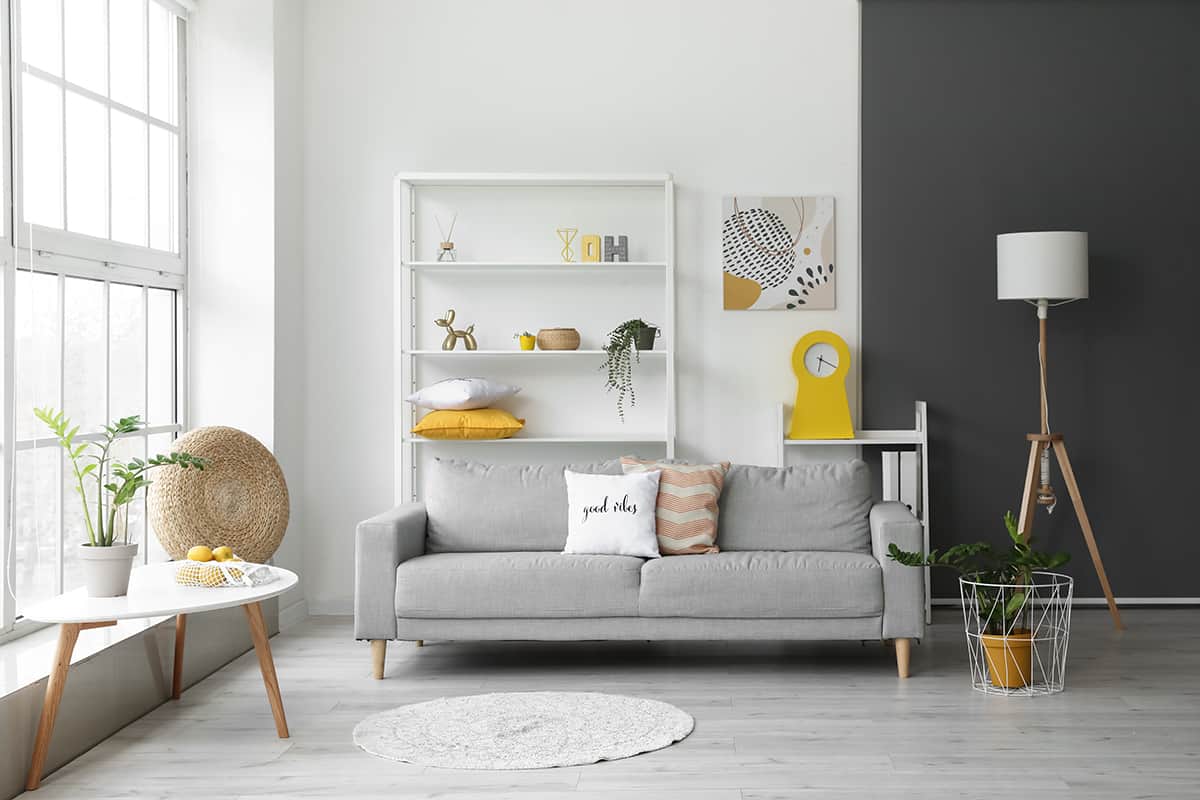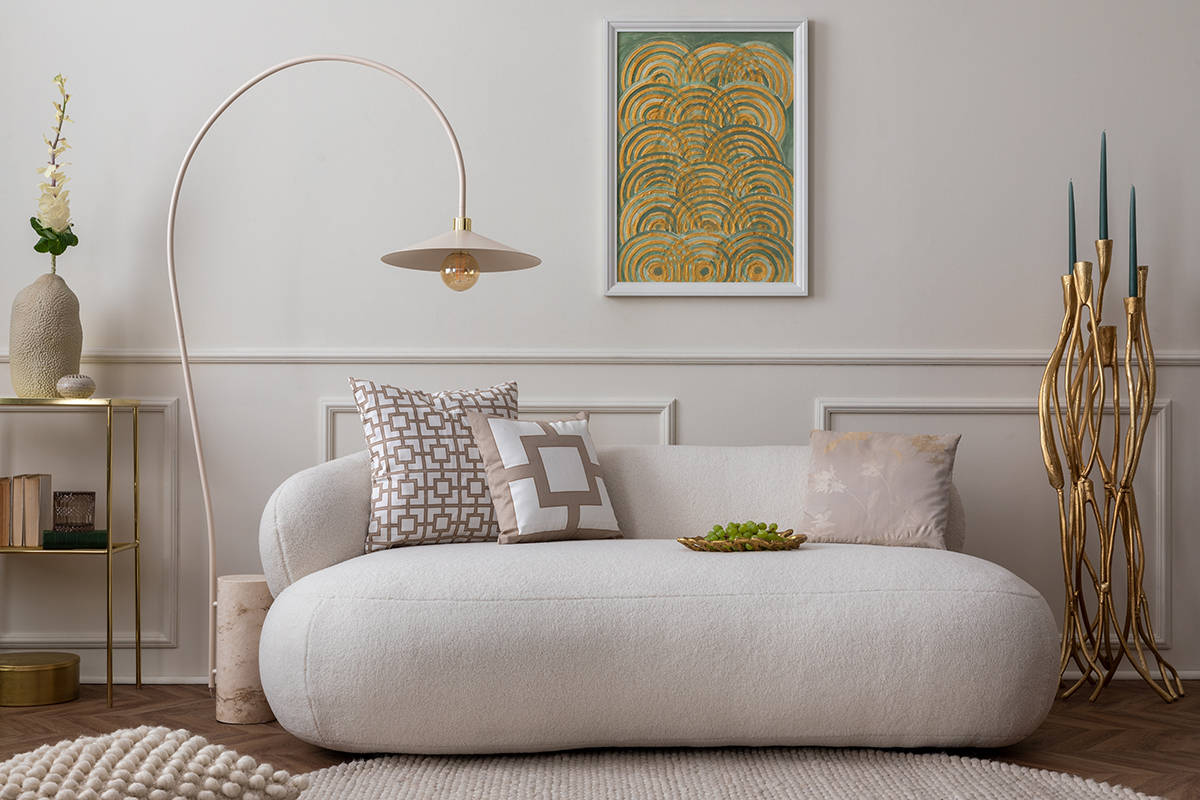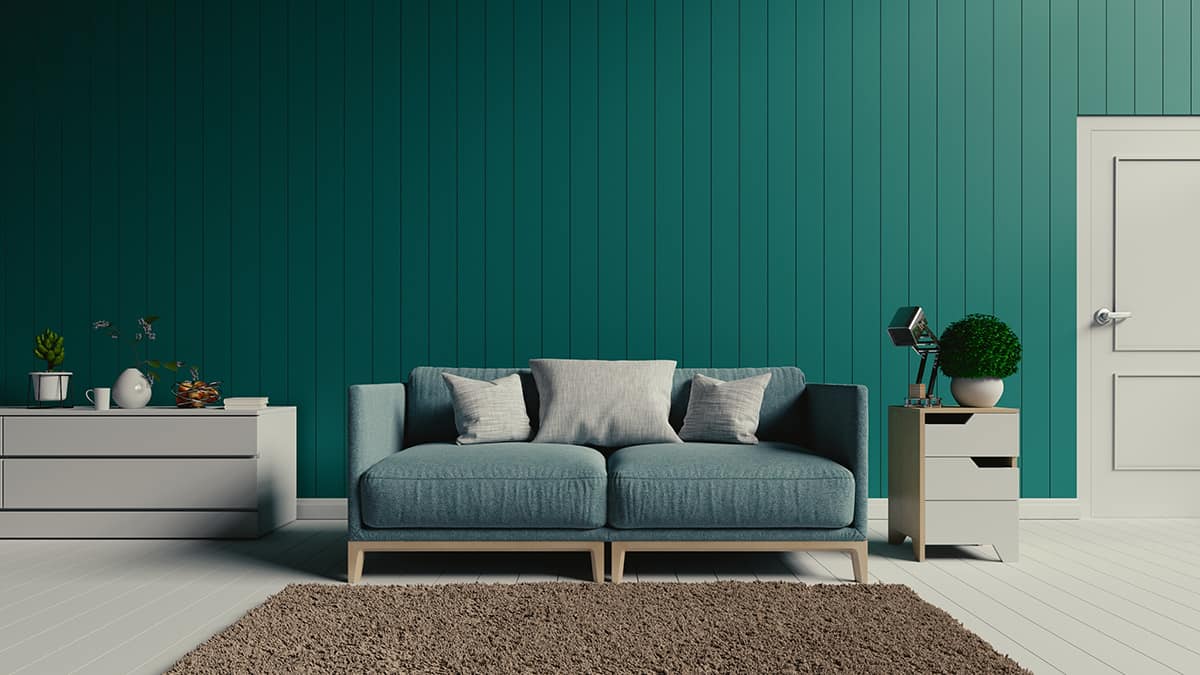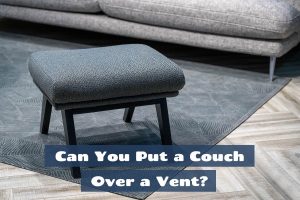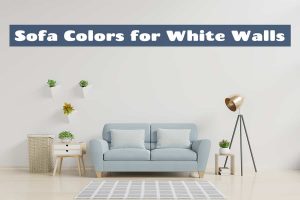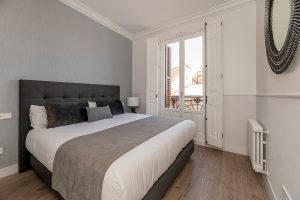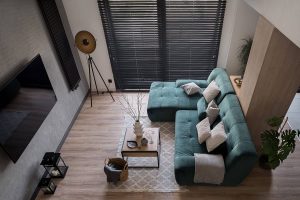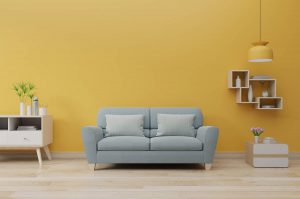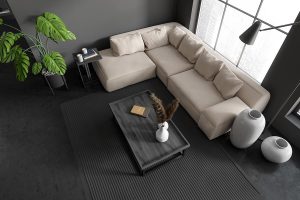In some cases, people will position their sofa directly against the wall, while in others, this may not be possible or preferable.
If you find yourself with an awkward gap between your sofa and wall, there are a number of ways you can make this look more intentional.
Here, we explore the reasons why you might consider introducing a gap between your sofa and wall and what you can do to make this functional and stylish.
Should There Be A Gap Between Sofa and Wall?
Whether or not you should have a gap between your sofa and the wall depends on your specific needs and the layout of your room. Think about these considerations when deciding whether or not to allow a gap between your wall and sofa.
Room Size
In smaller rooms, you might not have the luxury of placing the sofa away from the wall. In this case, it’s common and practical to have the sofa against the wall to maximize floor space.
If you’re debating whether or not to have your sofa pressed against the wall, try it out and see how this affects the usable space. In compact rooms, moving the sofa away from the wall can create wasted space that could be better utilized in the middle of the room.
Maintenance
Some interior decorators recommend that the sofa should be placed at least a few inches away from the wall to avoid the furniture leaving marks on the walls.
If you have pale-colored walls then this is more likely going to be an issue and could result in you having to clean or repaint the wall on a regular basis to cover over the scuffs. Keeping the sofa slightly off the wall can help to limit these types of maintenance issues.
Design Aesthetics
Some interior design styles, like mid-century modern or minimalist design, often feature sofas placed away from the wall to create a sense of space and openness.
On the other hand, more traditional or cozy design styles may involve placing the sofa against the wall for a snug and intimate feel. The type of atmosphere and style you want to achieve can affect the placement of furniture in a room, so consider this when setting your layout.
Functionality
Think about the intended use of the space when deciding whether or not to push your sofa up against the wall. If you plan to use the area behind the sofa for storage, seating, or decorative purposes, leaving a gap may be desirable. Conversely, if you have no specific use for that space, you might prefer the sofa against the wall to minimize wasted space.
Room Shape
The shape of your room can also influence your decision. In a square room, you might have more flexibility in sofa placement, whereas in a long and narrow room, it might make more sense to have the sofa against the wall to create a sense of balance.
Visual Balance
Consider the visual balance of the room. In some cases, having a sofa against the wall can anchor the room and provide a sense of symmetry, while in other cases, leaving a gap can create a more dynamic and interesting layout.
How to Fill the Gap Between the Sofa and Wall
If you have decided that it’s best for your space to leave a gap between the sofa and the wall, you might find that the gap creates a slightly awkward look.
There are a variety of ways you can address this gap that will make for a more appealing aesthetic. Some options can also make your space more functional.
Console Table
One of the most popular pieces of furniture to use between a sofa and the wall behind it is a console table. This not only fills the gap but also provides a surface for decorations or storage.
In compact rooms where you don’t have enough space for a coffee table or side table, a console table between the sofa and the wall can operate as a useful spot to put down your drink or keep books, magazines, or a phone.
Shelving Unit
Install a freestanding or wall-mounted shelving unit in the gap between a sofa and the wall to improve balance in the room.
This can serve as a display for books, candles, ornaments, photo frames, or storage for items like baskets. Lower shelves can also be utilized as a surface to rest drinks on if you can reach the shelf from your place on the sofa.
Floor Lamp
A floor lamp behind a sofa can be a really stylish and useful addition to a room. This will create soft lighting overhead while you are seated on the sofa, which is ideal for reading a book or mood lighting during the evening when the main lights in a room can be too harsh.
Floor lamps can also help you save space if you don’t have enough room for side tables where table lamps would ordinarily be placed. Floor lamps can also help to add atmosphere to a room, and they can make the gap between a sofa and the wall look intentionally styled. A floor lamp at either end of the sofa can also help add balance.
Rug
Using a rug underneath a sofa can help define the space and add warmth to the room. Ensure the rug extends out to almost meet the wall so that the gap between the sofa and wall looks purposeful.
Floating Desk
If you need a workspace, consider installing a floating desk that folds up when not in use. This can be a great solution for small spaces, utilizing the gap between a sofa and the wall. You could pair this with a folding chair that could be hung onto a hook on the wall, or stowed underneath the sofa when not in use.
Seating Area
If the gap is large enough, you can create a cozy seating area with a couple of small chairs, a coffee table, and a rug. This can serve as additional seating or a reading nook in the space between the sofa and the wall, working especially well in family rooms so you can have various sections for people to use the same space simultaneously.
Cabinet or Buffet
If you have a gap between the sofa and the wall in a dining or living room, you can place a cabinet or buffet there for extra storage and as a surface for serving food or displaying items. This can also be a useful place to set down drinks or small plates when you’re entertaining guests.
Plants
If you want to visually fill the gap between the sofa and the wall then houseplants can be a great solution because you can find these in all kinds of shapes and sizes. Opt for a plant in a size that creates visual balance with the sofa.
In most cases, a floor planter with a large plant is going to work best to fill this space and look stylish. Tall plants or a row of smaller ones can also work well to add a touch of nature to your space and make the gap between the sofa and wall look less awkward.
